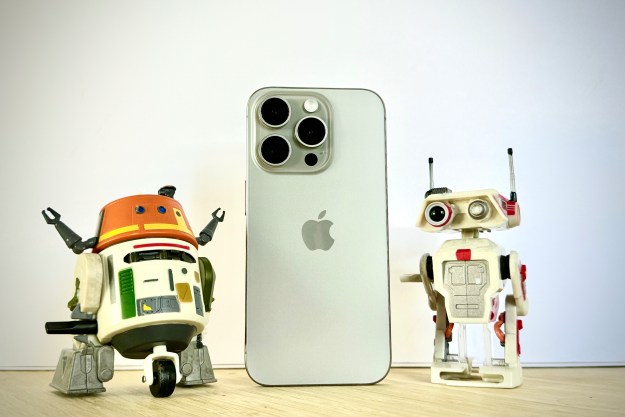Steven Spielberg is not only writing a horror story for an app, but he also has a really fiendish idea to make it even more atmospheric — your phone won’t let you see it until after the sun goes down. The app is called Quibi, and it’s a joint project between Hollywood and Silicon Valley, set to bring quick bites (QUIck BItes, get it?) of streaming entertainment only to your phone.
How will Spielberg ensure the timid don’t sneakily watch during the day? It’s going to have a timer linked to the time zone where the phone is located, and will only unlock the latest installment when the sun has set. When the sun rises again in the morning, the timer will reappear and count down until the next evening.
The story’s plot is still under wraps, but it’s being produced under the working title of “Spielberg’s After Dark.” Quibi founder Jeffrey Katzenberg — who also founded DreamWorks with Spielberg and David Geffen — said the story is “super scary” during a presentation at the Banff World Media Festival, and revealed it will consist of around 10 or 12 episodes. Spielberg has written between four and six of them already. Quibi calls each of the individual episodes “chapters,” and anticipates each one will run between seven and 10 minutes long. A 12-chapter story would end up being a feature-length production, but because they will initially only viewed in small chunks, they will be ideal for watching on the go.
It’s an exciting addition to Quibi’s lineup and although Spielberg isn’t really known for horror entertainment, his fantastical stories often have frightening elements. For example, in addition to Jaws, Close Encounters of the Third Kind, and War of the Worlds, he wrote the screenplay for Tobe Hooper’s Poltergeist, and was executive producer for the Amazing Stories series. Spielberg probably won’t be looking for an Oscar nomination for his Quibi work though.
If you haven’t heard about Quibi, it’s a short video platform with content only for smartphones, and is set to launch in April 2020. It’s another streaming service with a subscription though, so it’ll add to that ever-expanding monthly entertainment budget if you decide to sign up. According to the company, Quibi will cost $8 each month if you don’t want to see any ads, or if you don’t mind ads, it’ll cost $5 each month. Katzenberg is joined by Meg Whitman — formerly of Hewlett-Packard and eBay — as heads of the firm, and it has raked in investments of $1 billion to produce content.
Editors' Recommendations
- Here’s when your Vivo phone will get the Android 12 beta update
- Here’s when (and if) your Nokia phone will get Android 11




